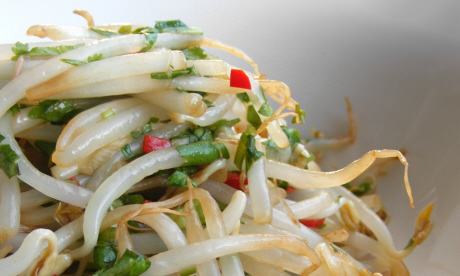
With Europe recently shaken by a fatal E coli outbreak, Dr Jane Wilson-Howarth looks at how worried you should be
In May this year, doctors in Germany were presented with tens of cases of severe diarrhoea that was far more virulent than anything they were used to treating. The disease had a high complication rate; there were even deaths.
It was identified as a variant of EHEC, enterohaemorrhagic Escherichia coli – better know as E coli – and, at first, Spanish cucumbers were blamed. However, genome mapping identified the source as a farm producing beansprouts in Germany.
The first outbreak has affected nearly 4,000 people in 14 European countries, plus the United States and Canada; all of the cases were in people from, or who had visited, Germany, or could be linked to the German cases.
Unusually, this form of EHEC killed nearly 10% of the people attacked; one quarter developed kidney complications (known as haemolytic-uraemic syndrome) and one in 30 went into irreversible renal failure, meaning that they either need lifelong dialysis or kidney transplantation. Now new cases are appearing in France.
EHEC is not a mere touch of travellers’ trots. But how worried do you really need to be? Here is a quick guide...
Escherichia coli are bacteria found in the large bowel of normal people; they are one of the range of ‘friendly bacteria’ or ‘normal flora’. Variants of E coli cause illnesses ranging from simple travellers’ diarrhoea (which settles in 36-48 hours) to others that have the potential to kill.
Even ‘friendly bacteria’ are promiscuous: they share genetic material with other microbes and can thereby acquire nasty attributes. Some produce toxins that cause an outpouring of profuse watery diarrhoea, sometimes with blood loss, in illnesses similar to bacillary dysentery and even cholera.
EHEC is caught by ingesting these microbes via the mouth through poor hygiene. British children have caught it from farm animals in petting zoos – having failed to wash their hands after touching livestock.
More commonly it is acquired due to someone with EHEC inadvertently inoculating bacteria into food through poor hand hygiene.
In most previous outbreaks of EHEC – as well as other diarrhoeal disease – it is children and the elderly who are most likely to suffer significant complications. But in these recent German cases there has been a different pattern of attack.
More women than men have been affected (61% of the EHEC cases and 70% of the haemolytic-uraemic syndrome cases are in women), and most victims are over 20 years of age. Experts wonder whether the traditional role of women as cooks is an explanation.
It is worth noting that in any new disease outbreak, the most serious cases will be documented. There will probably be others who have experienced mild illness or even no symptoms at all, and who will be unknown to health authorities. This makes ‘new’ or high virulence disease look more dangerous than it is in reality.
The incubation period is usually three to four days after exposure but symptoms can start as early as two days and as late as ten days after swallowing these bacteria. EHEC infection usually causes abdominal cramps and diarrhoea; often blood is mixed in with the faeces. Sometimes there is fever and/or vomiting. Most people recover within ten days, but in a few cases the illness progresses into life-threatening haemolytic-uraemic syndrome and renal failure.
As with eating in regions where you suspect hygiene practises might not be perfect, avoidance means following the ‘peel it, boil it, cook it or forget it’ rule. Following this mantra in places with poor infrastructure will help you avoid hepatitis, typhoid, worms, dysentery, etc.
Dukoral, the cholera vaccine, might also give some protection. As this oral vaccine is based on a pathogenic form of E coli (see www.medsafe.govt.nz/consumers/cmi/d/dukoral.pdf), it could provide some partial temporary protection, although no research has been done to establish Dukoral’s level of cover against this strain of EHEC.
Rehydrate, rehydrate, rehydrate. The most important first action is to drink clear fluids containing sugar or rehydration salts. Most victims fail to drink enough when they have symptoms, despite the fact fluids are life-saving. Find a doctor if you see blood in the faeces, have a fever or are ‘going’ uncontrollably, and get a stool check done.
In this case it is best to find a local doctor.
Check out more articles by Dr Jane Wilson-Howarth here
Health after travel: health risks are still there even after you've returned | Advice... More
Keep up to date with the travel health news with our weekly updates... More
Health: your 10 most frequently asked questions | Advice... More
6 tips to travel health happiness | Inspire me... More